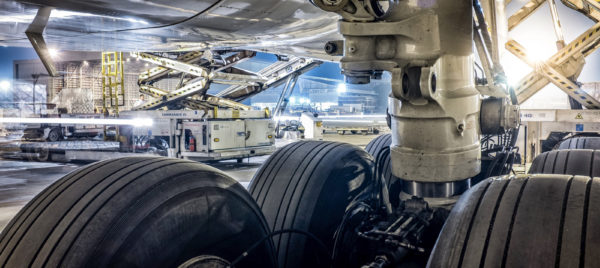MRO MANAGEMENT – A BALANCING ACT
“WE INSPECT WITH A ‘GLASS HALF-FULL’ APPROACH”
World Aero’s Phil Randell talks of the challenge of striking a balance in MRO.
October 2024: download a PDF of the article
MRO stands for maintenance, repair and overhaul. There’s no mention of simply making things brand new.
The role of an MRO, be it heavy maintenance or a component workshop, is to inspect, repair and release aircraft and their parts for continued service. Organisations are granted approvals to perform work, and a part of this approval is an undertaking that the organisation will use approved maintenance data and skilled personnel to determine what is acceptable.
During a repair or overhaul, it would be very easy to just replace everything; anything with so much as a blemish, a stain, a minor deformation, a little discolouration perhaps. Make it all brand new, how lovely. But at what cost? Sure, there are some components whereby a piece part must be pristine, with even the most superficial imperfection rendering it scrap (some engine parts and minuscule components of mechanical gyros come to mind). But, for most parts, a realistic MRO must remember that they are ‘used’ and will never be quite as perfect as a factory fresh item. And that’s often acceptable, with limits of permitted imperfections detailed by the vendor in their CMM.
On the other hand, if cost is the main driver, one could put on the dark sunglasses, pass items that are not up to standard in order to keep costs low, to keep customers happy – short-term at least.
Both are eventually catastrophic for the MRO; either seeing their customers flee when the repair quotes repeatedly come through high due to overzealous inspection standards or, in the other extreme, facing the very real threat of approval suspension or, as a minimum, a bad reputation if standards are allowed to slip.
The real skill in MRO is down to maintaining a quality product at a reasonable price. It’s a balancing act, made complicated by the fact that technicians have a subjective view, guided by what is often vague inspection criteria from the vendor’s CMM. At World Aero we inspect with a ‘glass half-full’ approach where we ask ourselves “Can we safely pass this?” rather than “How can we fail this?” when assessing components. We don’t only pass parts that are good enough to last until the end of time, we also pass items that are good enough to ensure a safe and reliable service until the next scheduled inspection; that’s what limits and guidance are for.
In our 25 years of MRO, like our industry colleagues and competitors, we’re aware that without customers or approvals we’re out of business. We’ve long since chosen our position in a world of leading maintenance providers and we’re proud to put our certificates on that.



